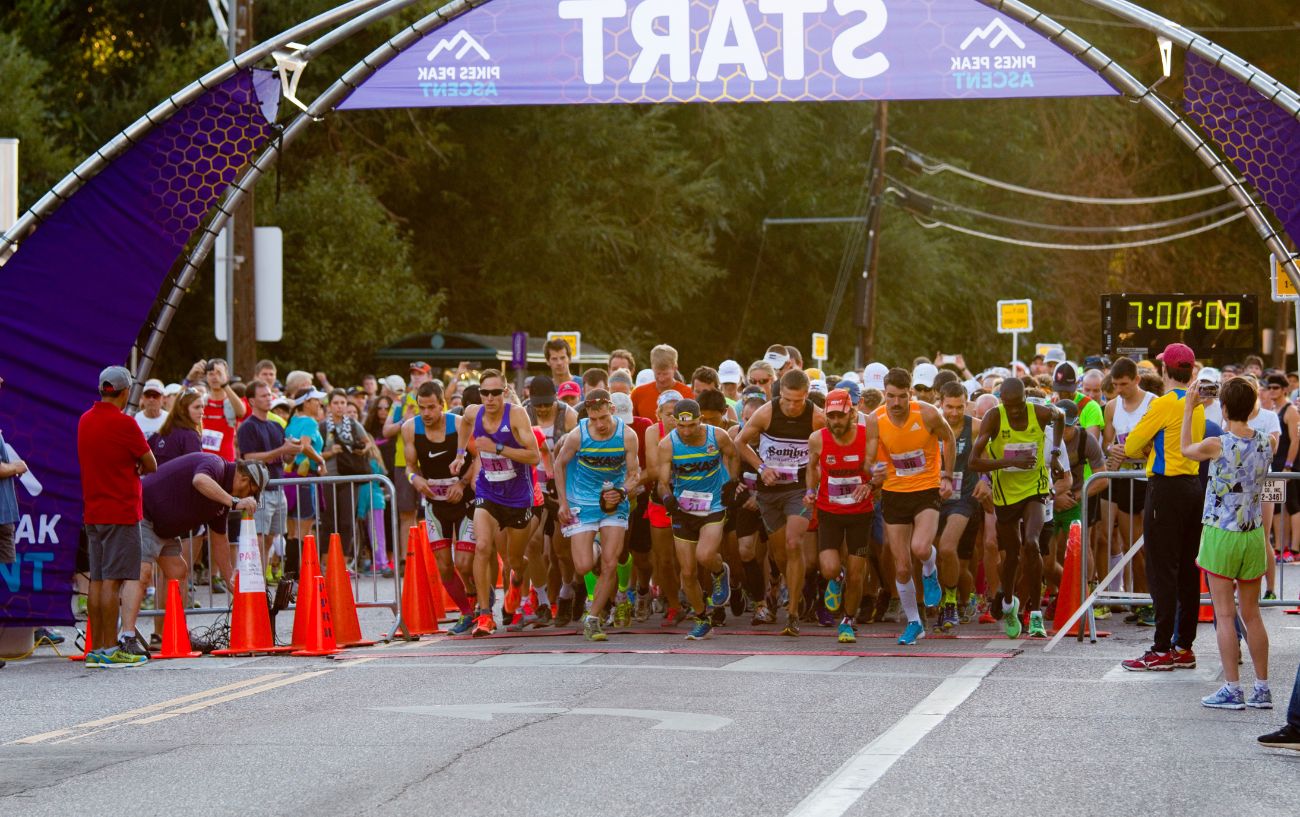

Featured
How Many Kilometers Is A Half Marathon
Modified: October 24, 2023
Discover how many kilometers are in a half marathon. Learn about this featured race distance and start training for your next running challenge.
Introduction
Welcome to the world of long-distance running! If you’ve ever wondered how far a half marathon is, you’re in the right place. Whether you’re a seasoned runner looking for a new challenge or a beginner aiming to complete your first race, understanding the distance of a half marathon is crucial.
A half marathon is a popular race distance that falls under the category of long-distance running. It offers a significant challenge while still being attainable for many individuals with proper training and preparation. In this article, we’ll explore the distance of a half marathon, how it can be measured in kilometers and miles, and provide some insights into training for this exciting event.
Running a half marathon is an excellent way to push your boundaries and achieve a significant fitness goal. It requires dedication, perseverance, and a smart training plan. Whether you’re aiming to complete it in a specific time or simply want to cross the finish line, the distance of a half marathon is an important factor to consider in your preparation.
Understanding the distance of a half marathon is also essential if you’re planning to participate in organized races or training programs. Many cities around the world host half marathons, attracting thousands of participants who have their eyes set on completing the challenging 13.1-mile course.
Now that we’ve set the stage, let’s dive into the specifics of a half marathon and explore how it can be measured in both kilometers and miles.
Understanding a Half Marathon
A half marathon, as the name suggests, is a race that covers half the distance of a full marathon. It is a popular choice for runners who want to tackle a challenging distance without committing to the full 26.2 miles. In terms of distance, a half marathon measures approximately 13.1 miles or 21.1 kilometers.
Participating in a half marathon requires a certain level of physical fitness and mental endurance. It is a test of both speed and stamina, where runners aim to maintain a steady pace over the course of the race. The distance of a half marathon provides a balanced challenge, allowing runners to experience the thrill of a long-distance race while still being achievable for many enthusiasts.
Running a half marathon is more than just covering the distance. It requires careful training, proper nutrition, and a solid understanding of pacing strategies. Many runners set specific goals for their half marathon, such as achieving a personal best time or completing the race injury-free. Understanding the nuances of a half marathon is crucial to setting realistic goals and planning an effective training regimen.
In addition to the physical demands, a half marathon also provides an opportunity for runners to immerse themselves in a supportive and energetic running community. Races are often accompanied by cheers from spectators, music bands along the route, and the camaraderie of fellow participants. The experience of crossing the finish line at a half marathon is filled with a sense of accomplishment and pride.
Whether you’re a beginner or an experienced runner, taking part in a half marathon is a significant milestone. It tests your commitment, dedication, and mental fortitude. The distance, while challenging, is achievable with the proper training and preparation. Understanding the intricacies of a half marathon will help you make the most of your race experience and set yourself up for success.
Converting Kilometers to Miles
When discussing the distance of a half marathon, it’s important to be familiar with both kilometers and miles. While the standard unit of measurement for most races is miles, many international runners are more accustomed to using kilometers. Fortunately, converting between the two is relatively straightforward.
In order to convert kilometers to miles, you can use the following formula:
Distance in miles = Distance in kilometers / 1.609
For example, if you want to convert a half marathon distance of 21.1 kilometers to miles, the calculation would be as follows:
Distance in miles = 21.1 / 1.609
This would give you a distance of approximately 13.109 miles.
Converting kilometers to miles can be useful for comparing distances or understanding race times when different measurement systems are used. It’s important to note that distances measured in miles are more common in the United States and a few other countries, while kilometers are widely used throughout most of the world.
Whether you’re training using a program that measures distances in kilometers or simply want to understand how far you’re running, knowing how to convert kilometers to miles is an essential skill for runners. It allows you to have a better grasp of distance and make accurate comparisons between race courses and training runs.
Now that we’ve covered converting kilometers to miles, let’s explore the reverse process—converting miles to kilometers—to provide a comprehensive understanding of how the half marathon distance is measured.
Converting Miles to Kilometers
If you are more familiar with miles than kilometers, you may find it helpful to know how to convert the distance of a half marathon from miles to kilometers. The conversion is relatively simple and can be accomplished using the following formula:
Distance in kilometers = Distance in miles * 1.609
Let’s consider an example to illustrate the conversion. If you have a half marathon that measures 13.1 miles and you would like to know the equivalent distance in kilometers, you can use the formula as follows:
Distance in kilometers = 13.1 * 1.609
This calculation yields an approximate distance of 21.1 kilometers.
Converting miles to kilometers is useful for international runners who are more accustomed to using the metric system, as well as for comparing race distances or training plans that use kilometers. Understanding how to convert miles to kilometers is a valuable skill that allows you to accurately comprehend the distance you are running and communicate with other runners around the world who may use the metric system.
With the knowledge of converting both kilometers to miles and miles to kilometers, you can easily navigate between the two measurement systems, ensuring that you have a clear understanding of the distance regardless of the unit used.
Now that we have covered the conversion process, let’s determine the exact distance of a half marathon and its significance in the world of long-distance running.
The Exact Distance of a Half Marathon
A half marathon is a race that covers a specific distance of 13.1 miles or 21.1 kilometers. This distance, although not as long as a full marathon, poses a significant challenge for runners. It requires training, endurance, and mental fortitude to complete the 13.1-mile course.
The distance of a half marathon is internationally recognized, allowing runners from different countries to compete and compare their performances. Whether you’re participating in a local race or a major international event, the distance remains the same. This consistency enables runners to set specific goals and track their progress using a universal standard.
Knowing the exact distance of a half marathon is crucial for runners who want to effectively pace themselves during the race. By understanding the distance, they can plan their strategies, determine their target speeds, and manage their energy reserves accordingly.
The distance of 13.1 miles or 21.1 kilometers also provides a benchmark for training. Runners can structure their workouts and gradually increase their mileage to ensure they are prepared for the demands of a half marathon. It serves as a tangible goal for beginners and a stepping stone for seasoned runners aiming for a full marathon in the future.
Furthermore, the distance of a half marathon serves as a source of motivation and accomplishment. Crossing the finish line at this specific distance is an achievement that runners can be proud of. It represents months of hard work, discipline, and dedication to training.
For many, completing a half marathon is a significant milestone in their running journey. It symbolizes a breakthrough in endurance and mental strength. Runners often experience a sense of pride and satisfaction when they achieve their goal, knowing that they have pushed themselves to new limits.
Now that you understand the precise distance of a half marathon, let’s delve into the training aspect and discover how you can prepare yourself both physically and mentally for this exciting challenge.
Training for a Half Marathon
Preparing for a half marathon requires a well-structured and progressive training plan. Whether you’re a beginner or an experienced runner, it’s important to approach the training process with discipline, consistency, and a focus on gradual progression.
Here are some key elements to consider when training for a half marathon:
- Building a Base: If you’re new to running or have been inactive for a while, it’s important to start by building a base of fitness. This involves gradually increasing your mileage and focusing on easy runs to develop your aerobic endurance.
- Increasing Mileage: As you progress in your training, gradually increase your weekly mileage to prepare your body for the distance of a half marathon. This can be done by adding one mile or kilometer per week to your long runs and gradually increasing the distance of your midweek runs.
- Speed Work: Incorporate speed workouts into your training to improve your pace. This can include interval training, tempo runs, and hill repeats to boost your cardiovascular fitness and enhance your running efficiency.
- Long Runs: Long runs are an essential component of half marathon training. They gradually increase in distance each week, simulating the demands of the race and building your endurance. Aim to complete at least one long run per week, gradually working up to a distance slightly longer than the half marathon distance itself.
- Rest and Recovery: Rest and recovery are just as important as training. Allow yourself adequate rest days to prevent injury and allow your body to adapt and grow stronger. Incorporate cross-training activities, such as swimming or cycling, to work different muscle groups and give your joints a break from the repetitive impact of running.
- Nutrition and Hydration: Pay attention to your nutrition and hydration during training. Fuel your body with balanced meals, including carbohydrates for energy and protein for muscle repair. Stay hydrated before, during, and after your runs to maintain optimal performance.
- Mental Preparation: Half marathons can be mentally challenging, especially during the later miles. Prepare yourself mentally by visualizing success, setting achievable goals, and practicing positive self-talk. Engage in relaxation techniques or mindfulness exercises to calm your mind and maintain focus.
Remember, training for a half marathon is a journey, not a sprint. Gradually build up your mileage, focus on consistency, and listen to your body. Celebrate small victories along the way and stay motivated with a positive mindset.
Now that you have a better understanding of training for a half marathon, it’s time to lace up your running shoes, create a training plan, and embark on this thrilling adventure.
Conclusion
A half marathon is an exciting and challenging race distance that provides a balance between endurance and attainability. With a distance of 13.1 miles or 21.1 kilometers, it offers a significant accomplishment for runners of varying levels of experience and fitness.
Understanding the distance of a half marathon, whether measured in kilometers or miles, is essential for setting goals, planning training, and properly pacing oneself during the race. Whether you’re a beginner aiming to complete your first half marathon or a seasoned runner looking to achieve a personal best, knowing the precise distance allows you to prepare physically and mentally for the race.
Converting between kilometers and miles is a useful skill for international runners and allows for easy comparisons between races, training plans, and personal achievements. Knowing how to convert the distance is valuable in a global running community where both measurement systems are commonly used.
Training for a half marathon requires dedication, discipline, and a well-structured plan. Gradually building your endurance, incorporating speed work, and allowing for proper rest and recovery are key elements to a successful training journey. Paying attention to nutrition, hydration, and mental preparation will also contribute to your overall performance on race day.
Completing a half marathon is an accomplishment that should be celebrated, regardless of your finishing time. Crossing the finish line after weeks or months of training instills a sense of pride, achievement, and resilience. It represents the commitment and hard work that you’ve invested in yourself and your running journey.
Whether you’re a beginner or a seasoned runner, participating in a half marathon is an experience that not only pushes your physical boundaries but also brings you into a vibrant running community. The camaraderie and support found during the race add an extra layer of motivation and encouragement.
So, lace up your running shoes, set your goals, create a training plan, and embrace the challenge of a half marathon. Remember, with dedication, perseverance, and a touch of enjoyment, you can conquer the distance and create lasting memories of your achievement.









